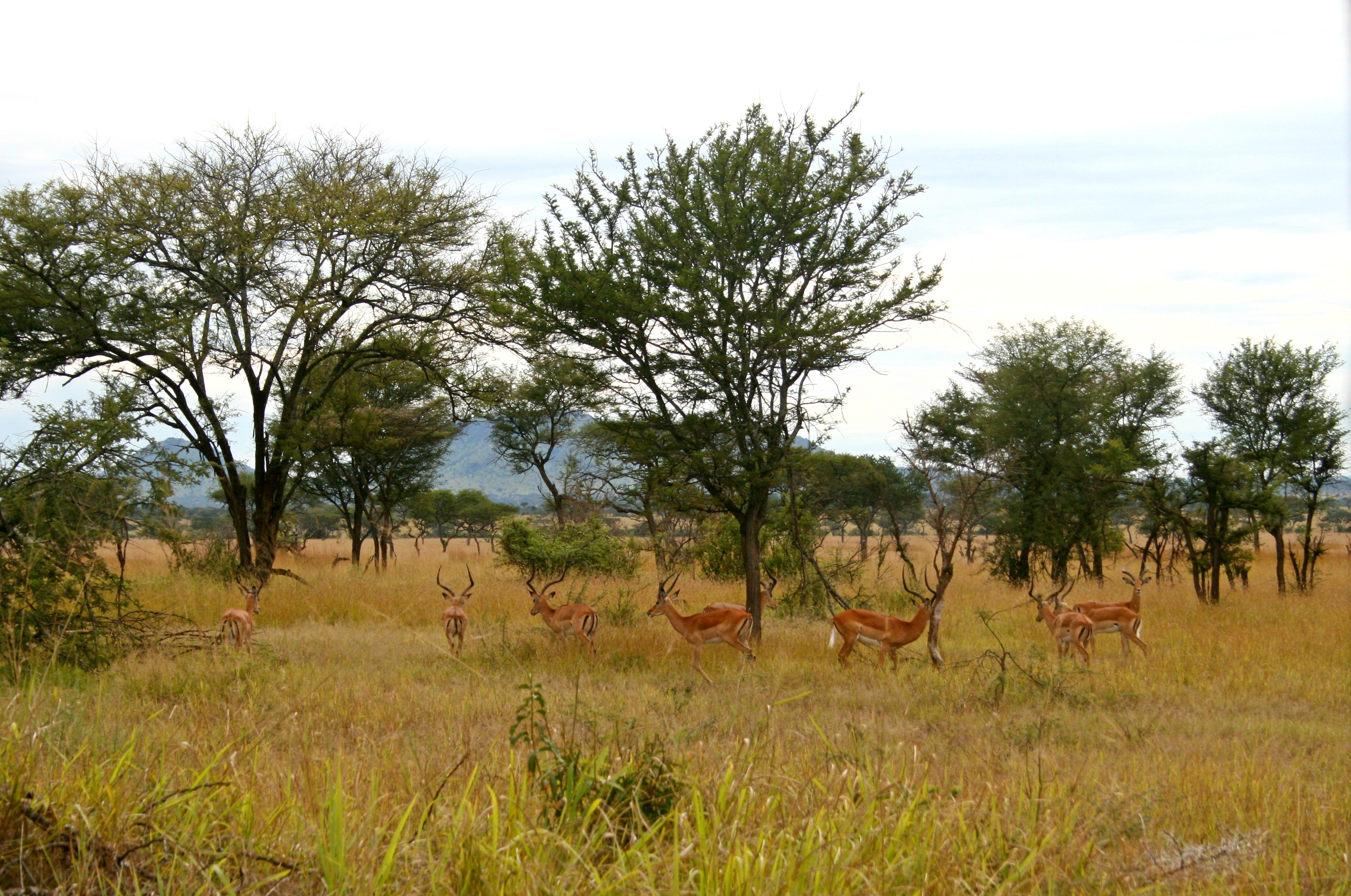
Thomson Gazelle in Serengeti National Park, Tanzania During Dry Season Photo: Elizabeth Anderson © 2016.
Every year over 2,000,000 animals travel almost 3,000 kilometers between the Masai Mara Natural Reserve in Kenya and the Serengeti National Park in Tanzania every year. This is known as the great migration and is one of the biggest in number of land animals in the world today. The animals, mostly wildebeest, also include zebra and gazelle and a number of predators, like lions and hyenas, can follow the herds as well. The herds move in a clockwise pattern through the park lands to follow water and food. Wildebeest are the largest antelope species in Africa, also known as gnu, and they give birth in January and February in southeast Serengeti. The Serengeti and Masai Mara host the largest herd of wildebeest in Africa. August through October is when the great herds are move north to Kenya and pass through the Mara River Basin. The animals cross the Mara at several places and risk being attacked by crocodiles, crowded and crushed in the cross-river movement or washed away and drowned in a sudden flood event.
Expert Africa, one of many foreign-based tour companies, offers great information including a month by month map on their website. When the SELVA team visited the Serengeti Park in March it was dry season and few animals were visible from the roads. Fires were visible in the distance and the landscape looked parched.Some safari camps are seasonally located by the Mara River for the purposes of offering visitors the chance to witness a part of the dramatic migration across the landscape and river. Even though we visited during the dry season with barely any tourists present, the Mara River flow was undeterred. We were told by a resident safari camp that they were not able to cross at the Kogatende Bridge due to unusually high levels the day before we arrived. The flashiness of the Mara River is important for regional ecosystems, such as providing a flush of otherwise highly sedimented waters. When a flash flood event causes a large die off of vulnerable animals crossing or living along the river, scavengers downstream are in for a feast. Scientists at Yale’s Postlab study the dynamics of such events and other details of the Mara River to better understand the chemical, biological, and physical aspects of the intricately interwoven systems.
The migration is seasonal as are most of the local safari camps. The migratory animals are thought to use the Mara River as part of their navigation back to calving grounds in Kenya where they pause to raise young before beginning their ramblings again. How the animals use the river is still being studied by scientists. The camps use the ground water near to the Mara River for water in the camps and have primitive, but reportedly efficient systems for disposing wastewater back into the landscape. It is not yet known how drawing intense amounts of water from the ground in the basin has impacted the river’s levels over time. Permits for such extraction are gained through the National Park rather than Tanzania’s Water Ministry. Water is treated in the camps for bathing, washing, and swimming pools.
The great land migration is one of the most iconic events to happen across the Serengeti savannah landscape. The drama of life and death moments has caught the attention of photographers and filmmakers the world over, most notably National Geographic has covered the migrations in dozens of stories, film, video, and photographs. Since it is not completely understood what drives the migration, scientists are still researching the details of what may trigger the movement. The importance of the Mara River is as a source of water for the animals as well as a navigation tool on their journey. The SELVA team learned from local reports that the migration timing has changed over time and that the animals are not returning at the predicted months as they had in the past.







Recent Comments